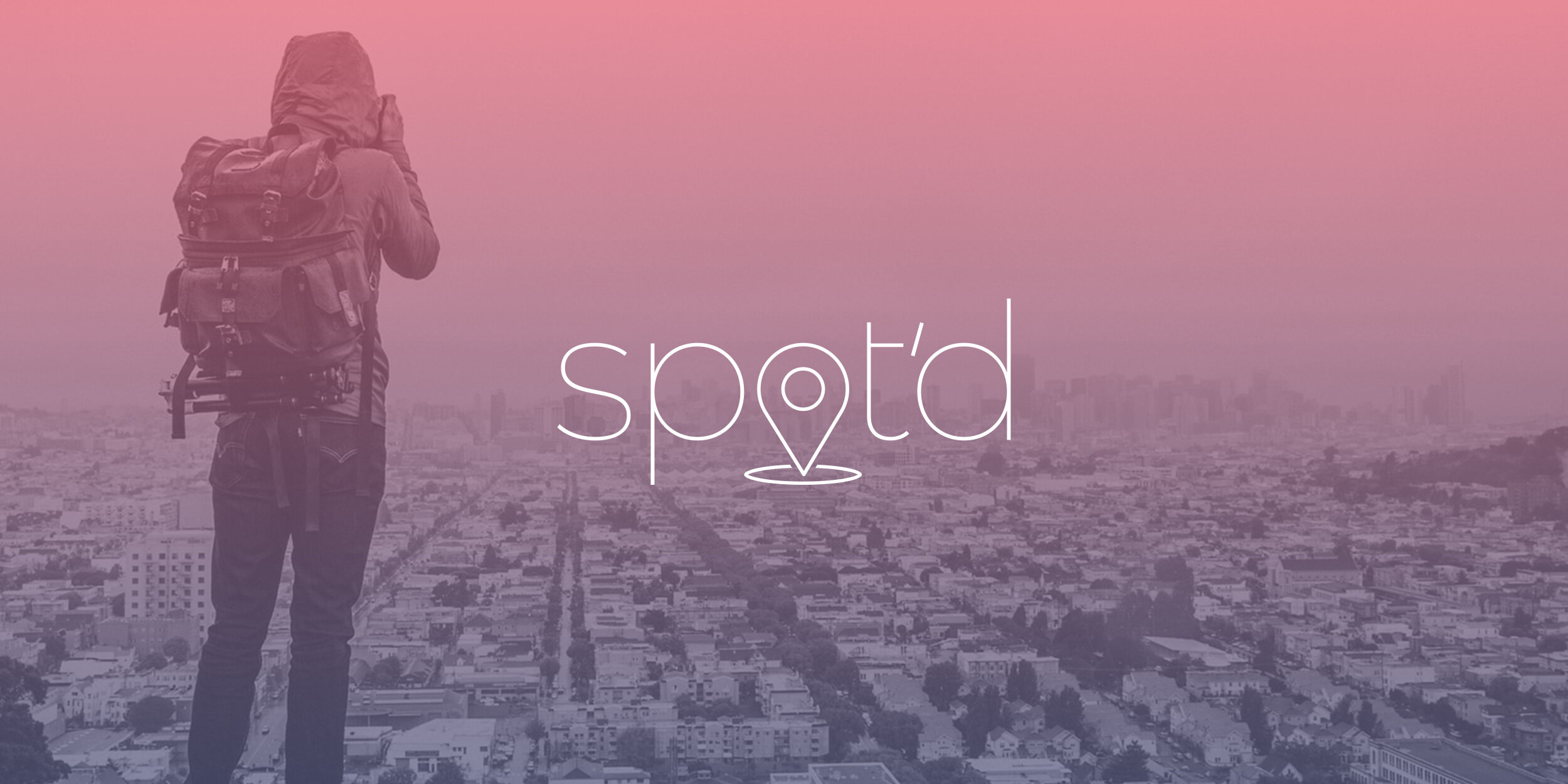spot’d
Client:
General Assembly UX Course Final Project
Roles:
User Research, Protyping & Testing, Visual Design, Branding
During the summer of 2019, I decided to attend General Assembly’s User Experience Design Class to learn more about what UX really is and to add more to my skill set. It was a 10-week course designed to fast-track you into the world of UX design, from research to prototyping, with the end goal of creating a product as a final project.
spot’d is a platform where photographers, amateurs and professionals alike, can go to find locations for a shoot. It is a crowd-sourced platform where other photographers can post photos of their favorite locations or previous locations for shoots, and share it with others.
Final presentation can be found here.
The Problem Statement
To begin, we needed to understand what the needs were. We were to come up with a a statement that explains the problem that we were going to address.
Amateur photographers often have trouble finding new spots to take photos.
Amateur photographers need a way to find locations to shoot because they lack familiarity of the area.
Research
Once we had our problem statement, researching was the next step to addressing the problem statement. We identified other products that were out in the market with competitive analysis and set up multiple rounds of interviews with potential users to find out their needs. I decided to focus more on amateur photographers, with an additional professional and a ‘social’ photographer.
With the interviews, I discovered habits and needs of users:
Inspiration from elsewhere. Users mostly relied on social media and multiple platforms to find locations or inspirations for shoots.
Importance of another eye. They value other photographers’ input on achieving looks.
Immediate location. Most take photos locally but take certainly take photos when on vacation/traveling. When finding a photo with a location, they often go to recreate or find ways to get a better shot.
User Persona
With the findings, I developed a user persona that spot’d was trying to meet the needs of users.
User Flow & Site Map
With the persona, I was now focused on prioritizing features and creating the flow of what users will go through.
To create the site map, I had potential users go through card sorting, with all the features listed, to find out the architecture of the product. Card sorting revealed that users were expecting the product to be built like existing platforms, mostly organizing features based on what they’re already familiar with.
Wireframes
With the completed site map, I was now able to start with creating the wireframes for the product. I started out with sketching out key screens, then moved onto low fidelity.
After creating the low fidelity wireframes, I moved onto making high fidelity wireframes to prepare for user testing.
User Testings & Findings
In order to find out if I had met the needs of the users and to make sure that the product itself was intuitive, I set up user testing with the same users who I had interviewed in the beginning. I gave the users two tasks to complete:
Search for a photo and add it to a collection.
Upload a photo and map it for other users to see.
The findings from the first round of user testing revealed some issues that users had.
Lack of confirmation. Some users were getting lost in the process because there was no confirmation after task is done.
Additional features expected. Icons, specifically the upload button, were mistaken to do more than intended.
Lack of organization options. Users wanted more ways other than ‘cities’ to organize photos.
Distractions. The level of fidelity was distracting to some users. They wanted to explore rather than stick to the task.
The path less taken. Users wanted to see more ‘unconventional’ ways to get task done.
Reiterate
With the latest feedback, I remapped the user flow to get a clearer understanding of what path the users take to complete certain tasks. I also added new features to solve for some of the issues users had from the first round of testing.
Going through the process of designing for user experience was eye-opening. It showed me what the actual focus was and the importance of doing research when it comes to building products.
Research. Going through the steps showed me the importance of knowing who you’re solving problems for and what their problems are. You cannot build a successful product if you do not know what your user needs are.
User problems first. In the limited time I had with the project, I needed to learn to prioritize user problems first before anything else. I had gotten carried away with building a great looking product, that I ended up missing out on certain details of the user journey.
ⓒ Kevin Ordonez 2023

